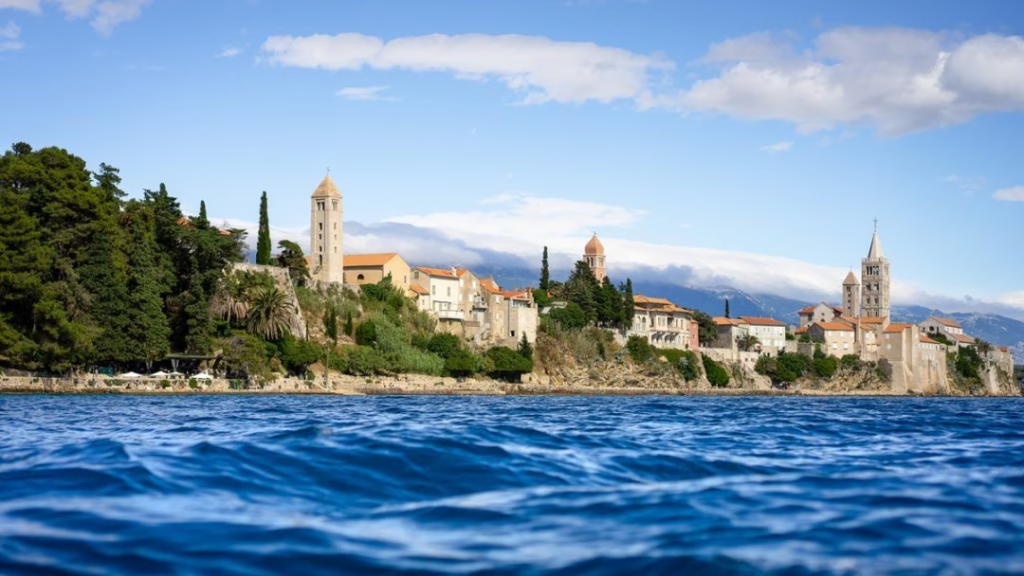Hvar, one of Croatia’s most beautiful islands, has long been a crossroads of civilizations, from the ancient Greeks to the Romans. Renowned for its crystal-clear waters, stunning landscapes, and rich historical heritage, the island continues to reveal hidden treasures, such as the recent discovery of a remarkably well-preserved Roman mosaic in Stari Grad. A recent archaeological discovery in the old town of Stari Grad has further enriched this legacy—a remarkably well-preserved Roman mosaic dating back to the 2nd century AD. This finding sheds light on the ancient history of the region and the significant Roman influence in the Adriatic.

Table of Contents
ToggleDiscovery of the Roman Mosaic
During excavation works for modern infrastructure improvements, archaeologists uncovered a hidden treasure beneath the cobbled streets of Stari Grad. The Roman mosaic was found approximately two meters below the surface, providing insight into the opulent lifestyle of the era. The intricate designs suggest that the mosaic was once part of a luxurious Roman villa, known as a villa urbana, belonging to a wealthy family.
The excavation was led by a team of experts from the Institute of Archaeology in Zagreb, in collaboration with the Stari Grad Museum. This partnership has been instrumental in uncovering and preserving many historical artifacts in the region, including previous Roman-era findings that have provided valuable insights into the ancient settlement of Pharia. Their efforts revealed an exceptionally detailed geometric and floral-patterned mosaic, which has been remarkably well-preserved despite the passage of nearly two millennia.
Historical Context of Stari Grad
Stari Grad, originally known as Pharos, was founded by Greek settlers in 384 BC. The town later fell under Roman control and became known as Pharia. The Roman era was a period of great development, with advanced infrastructure, trade, and cultural exchange flourishing in the region.
The discovery of this mosaic reinforces Stari Grad’s status as one of Croatia’s most historically significant locations. Roman mosaics were often used to decorate the floors of homes belonging to affluent citizens, showcasing their artistic tastes and social standing.
Details of the Mosaic
The uncovered mosaic features an elaborate design typical of the Roman period. Crafted from small, precisely cut stone tiles, the mosaic’s patterns include intricate geometric shapes and floral motifs. The level of detail suggests that it was part of a reception hall or a main living area of a Roman villa.
Such mosaics were not only decorative but also served as a status symbol, reflecting the wealth and sophistication of the villa’s owner. Similar Roman-era mosaics have been discovered in various parts of the Mediterranean, including Italy and North Africa, where they often depicted mythological scenes, daily life, or elaborate geometric patterns. The craftsmanship and stylistic elements of the Stari Grad mosaic bear resemblance to those found in Pompeii and Carthage, suggesting a shared artistic influence across the Roman world. The presence of this mosaic in Stari Grad further supports the idea that the town was a significant settlement during the Roman occupation of the region.
Previous Discoveries and Preservation Efforts
This is not the first time Roman-era remains have been discovered in Stari Grad. In the early 20th century, parts of another Roman villa were uncovered just a few meters away from the current excavation site. However, due to concerns about preservation, these findings were covered up and reburied.
Today, there is a renewed focus on the conservation of historical artifacts in Hvar. Local authorities and archaeological experts are working together to ensure that this recent discovery is adequately protected. The ongoing excavation project includes the study of 14 additional sites around Stari Grad, potentially revealing more Roman-era structures and artifacts.
Future Plans for the Mosaic
Preserving this historical treasure is a top priority. One proposed plan is to carefully extract the mosaic and relocate it to the Stari Grad Museum, where it can be safely displayed and studied. This would protect it from environmental damage and allow visitors to appreciate its artistic and historical value.
In place of the original, a high-quality replica could be installed at the excavation site, allowing tourists and locals to experience the mosaic in its authentic setting without risking its deterioration. This approach would balance both preservation and accessibility.
Significance of the Discovery
The discovery of this Roman mosaic in Hvar’s old town is a remarkable testament to the island’s rich history. It provides valuable insights into the daily lives of its ancient inhabitants and highlights the region’s role in the broader Roman world.
For history enthusiasts, archaeologists, and travelers alike, this finding offers a fascinating glimpse into the past. As excavation efforts continue, there is hope that even more hidden treasures will be uncovered, further illuminating the historical importance of Hvar and its surroundings.
Conclusion
This Roman mosaic is more than just an archaeological artifact; it is a piece of history that connects the present with the past. By preserving and showcasing such discoveries, Hvar continues to reinforce its cultural significance and remains one of Croatia’s top destinations for history lovers. Similar archaeological finds in the region have boosted tourism and increased local interest in historical preservation, demonstrating the profound impact such discoveries can have on cultural heritage and economic development. As research progresses, it will be exciting to see what other historical wonders lie beneath the surface of this ancient Adriatic town.


